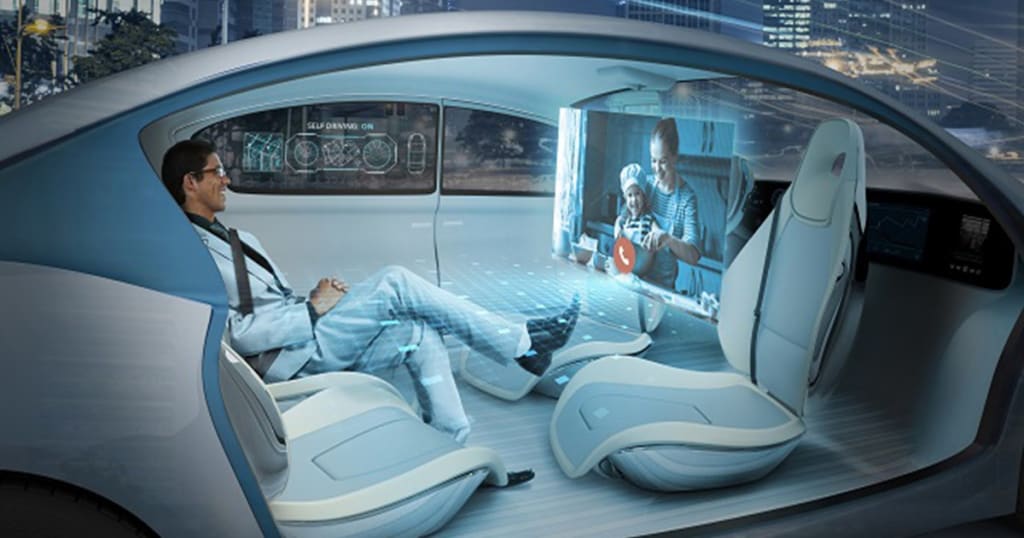The Future of Transportation: Self-Driving Cars and Beyond
The future of transportation holds tremendous potential for revolutionizing the way we move from one place to another.

The future of transportation holds tremendous potential for revolutionizing the way we move from one place to another. Emerging technologies, such as self-driving cars, electric vehicles, and hyperloop systems, are reshaping the landscape of transportation, offering safer, more efficient, and sustainable modes of travel. In this article, we will explore the future of transportation, focusing on self-driving cars and other groundbreaking innovations that are poised to transform our roads and beyond. With an informative, knowledgeable, and engaging tone, we will delve into the possibilities that lie ahead.
1.Self-Driving Cars: The Next Frontier
Self-driving cars, also known as autonomous vehicles (AVs), represent a significant leap in transportation technology. These vehicles use a combination of sensors, cameras, and advanced algorithms to navigate and make decisions without human intervention. The potential benefits of self-driving cars are immense, including increased safety, reduced traffic congestion, and improved fuel efficiency.
2.Enhanced Safety and Accident Reduction
One of the primary drivers behind the development of self-driving cars is the potential for enhanced safety on our roads. Autonomous vehicles are equipped with advanced sensors that continuously monitor the surroundings, detect obstacles, and make split-second decisions. By removing human error from the equation, self-driving cars have the potential to significantly reduce accidents caused by distracted driving, fatigue, or human error.
3.Efficient Traffic Flow and Reduced Congestion
Self-driving cars have the potential to optimize traffic flow, reducing congestion and improving overall efficiency. Through real-time communication and coordination, autonomous vehicles can operate harmoniously, adapting to changing traffic conditions and optimizing routes. Additionally, self-driving cars can safely travel closer together, reducing the space required between vehicles and maximizing road capacity.
4.Enhanced Mobility and Accessibility
Autonomous vehicles have the potential to transform mobility for individuals who are unable to drive, such as the elderly or people with disabilities. Self-driving cars can provide accessible transportation options, allowing greater independence and mobility for those who may have otherwise relied on public transportation or specialized services. This increased accessibility can contribute to a more inclusive and equitable transportation system.
5.Environmental Sustainability and Energy Efficiency
The future of transportation is closely tied to sustainability, with self-driving cars playing a pivotal role in reducing carbon emissions. Electric self-driving cars, in particular, offer the potential for zero-emission transportation, as they can be powered by renewable energy sources. Additionally, autonomous vehicles can be programmed to drive more efficiently, optimizing acceleration, deceleration, and route planning, which can lead to significant fuel savings and reduced environmental impact.
6.Connected and Cooperative Vehicles
The future of transportation also envisions a world of connected and cooperative vehicles. Through vehicle-to-vehicle (V2V) and vehicle-to-infrastructure (V2I) communication, autonomous vehicles can exchange real-time information about traffic conditions, road hazards, and other relevant data. This connectivity enables cooperative driving, where vehicles work together to optimize traffic flow, prevent accidents, and improve overall transportation efficiency.
7.Beyond Self-Driving Cars: Hyperloop and Flying Taxis
While self-driving cars are capturing significant attention, other innovative transportation solutions are also emerging. Hyperloop systems, envisioned by entrepreneur Elon Musk, propose high-speed transportation in low-pressure tubes, potentially revolutionizing long-distance travel. Hyperloop pods would travel at near-supersonic speeds, offering a faster and more sustainable alternative to traditional modes of transportation.
Flying taxis are another exciting development on the horizon. These electric vertical takeoff and landing (eVTOL) aircraft aim to provide on-demand air transportation within urban areas. With the ability to bypass road congestion, flying taxis have the potential to drastically reduce travel times and transform urban mobility.
8.Infrastructure Challenges and Regulatory Considerations
While the future of transportation holds immense promise, it also presents significant challenges. Infrastructure needs to be upgraded and adapted to accommodate autonomous vehicles, including the installation of supportive communication systems and charging infrastructure for electric vehicles. Additionally, regulatory frameworks and standards must be established to ensure the safe operation of self-driving cars and the integration of emerging transportation technologies.
9.Public Perception and Trust
The acceptance and adoption of self-driving cars and other emerging transportation technologies depend on public perception and trust. It is crucial to address concerns about safety, privacy, and potential job displacement. Transparent communication, rigorous testing, and ongoing public education are essential to building trust and garnering support for these innovations.
10.Collaborative Efforts and Partnerships
The future of transportation relies on collaborative efforts and partnerships across various sectors. Governments, industry leaders, researchers, and communities must work together to develop and implement innovative transportation solutions. By fostering collaboration, sharing knowledge, and leveraging diverse expertise, we can build a transportation system that is safer, more efficient, and sustainable for all.
The future of transportation holds immense promise, driven by self-driving cars, electric vehicles, hyperloop systems, and other groundbreaking innovations. These advancements have the potential to enhance safety, reduce congestion, improve accessibility, and promote environmental sustainability. However, realizing this future requires careful planning, infrastructure upgrades, regulatory frameworks, and public acceptance. By embracing emerging technologies, fostering collaboration, and addressing challenges proactively, we can shape a future of transportation that is safer, more efficient, and sustainable, transforming the way we travel and connect with the world.
About the Creator
Aditya Bali
Discover a treasure trove of insights on tech, personality development, health, and more! Upgrade your life with practical tips and cutting-edge knowledge in one captivating blog. Don't miss out! #knowledge #growth #inspiration






Comments
There are no comments for this story
Be the first to respond and start the conversation.